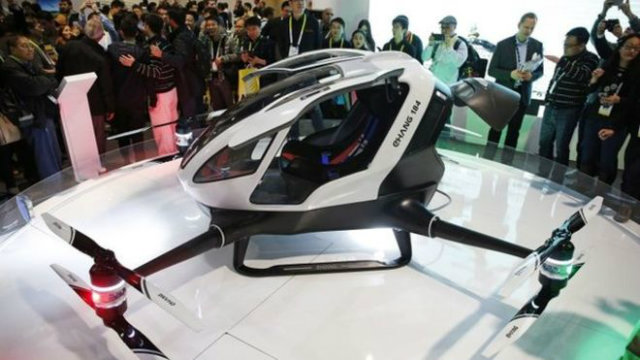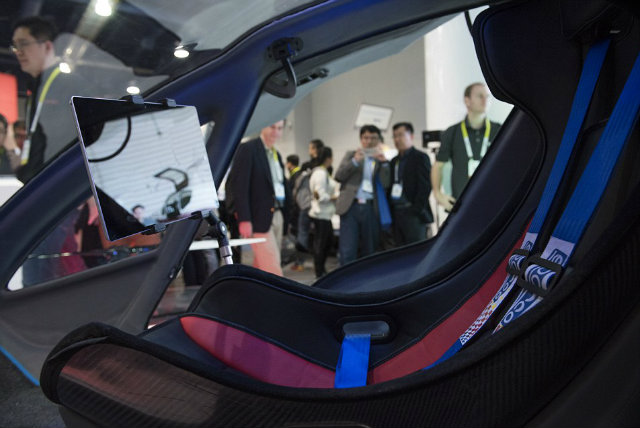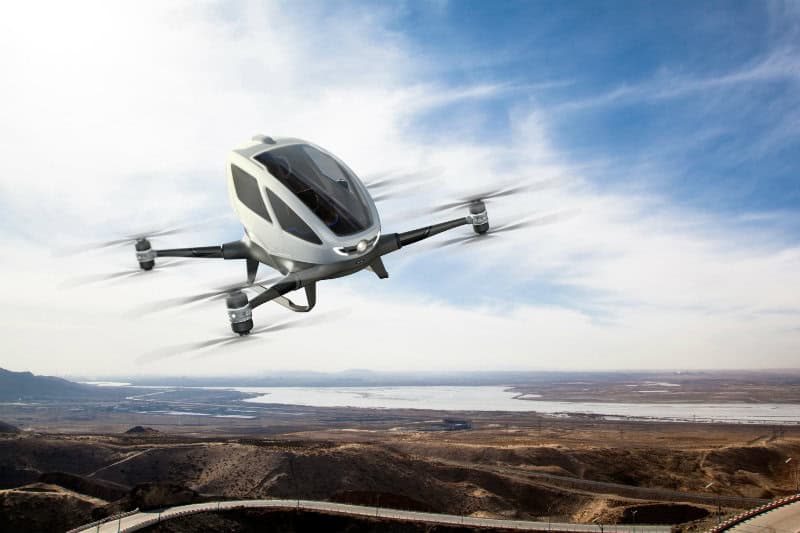LAS VEGAS (Web Desk) – A Chinese company, working on a ‘drone taxi’ that can transport a single passenger for up to 23 minutes, has been given approval for test flights in Nevada.
The company is the first of its kind in the United States.
The autonomous drone – dubbed 184 – can carry one passenger and was developed by Chinese company EHang.

It has been billed as the “world’s first passenger drone capable of autonomously carrying a person in the air for 23 minutes,” The Guardian reported.
A prototype was shown off at this year’s Consumer Electronics Show in Las Vegas, with the company hoping to sell the drones later this year.
MIT students build self-flying drone that can dodge obstacles
“I personally look forward to the day when drone taxis are part of Nevada’s transportation system,” the institute’s business development director, Mark Barker, told local the Las Vegas Review Journal.
The prototype drone is over 4ft (1.2m) tall, weighs 440lb (200kg) and has eight propellers. It can carry a single passenger for 23 minutes at 60mph (96km/h).

Passengers enter their destination on a 12in (30cm) touchscreen in front of their seat, and the drone’s on-board computer works out the best route.
Facebook builds internet-beaming drone for remote areas
There is no passenger over-ride function, meaning the user cannot take control in an emergency.
In the event of a malfunction, the drone would land in the nearest available area. It is likely to sell for between £140,000 ($200,000) and £200,000.
You can see the drone in action here:
According to the video, the designer was inspired to design “an absolute safe aerial vehicle” after two of his friends were killed in airplane crashes.
The experience of using the drone taxi is meant to be extremely simple for the passenger. The company explains: “After setting up the flight plan with a single click, user can take off on any location, sit, relax and enjoy the flight.”
However, experts believe the drone’s simplicity raises safety questions.
Regulation of commercial drones has proved tricky in both the US and Europe, and some doubt if passenger drones will ever get off the ground.
“It feels like it is a long way off,” Douglas McNeill, a senior analyst at consultancy Macquarie, told the BBC.
“Drones will first have to prove their worth in less people-facing roles such as deliveries of small cargo,” he explained.
“The other question is whether people will be willing to fly in a pilotless aircraft, and that seems like a big leap,” he added.
Google eyes drone package deliveries till 2017
Dr Mirko Kovac, director of the Aerial Robotics Lab at Imperial College London, said: “Passenger drones have huge potential. They can decrease congestion, offer flights in challenging environments and in developing countries where the road infrastructure is not as developed.”
“We don’t even think about large aircraft flying over large cities on autopilot. Yet people are afraid of drones, some of which may use similar robotic technology. I think society will overcome this once the technology is more proven,” he said.













